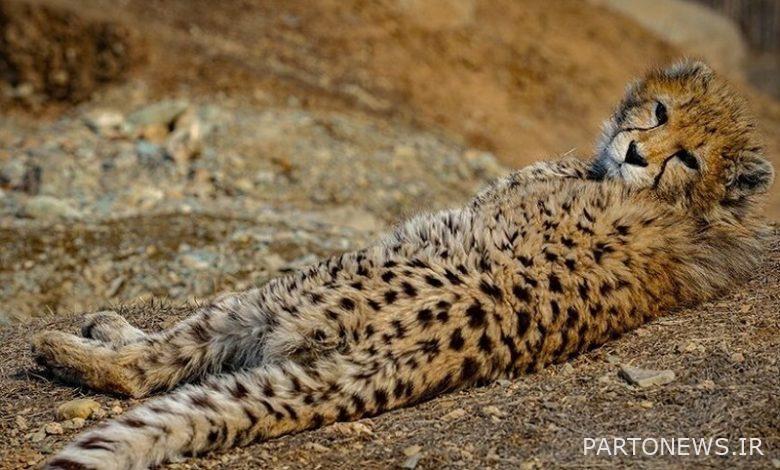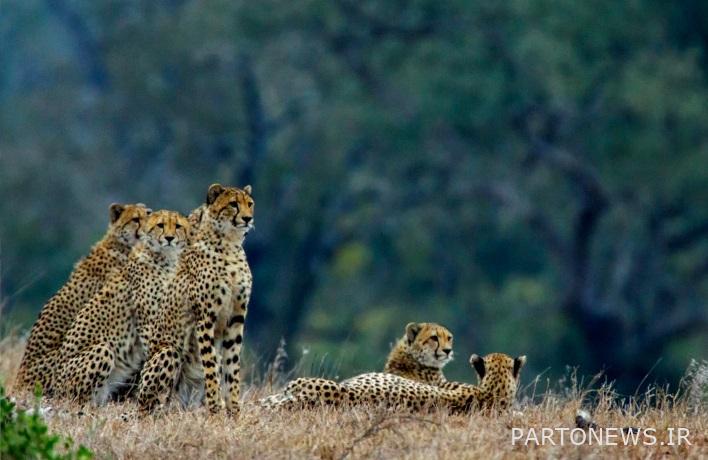The bitter story of the death of cheetahs in the last decade/ Should the cheetah corridor be changed?

According to the social reporter of Moj news agency, it is still three months since “Majarad” was lost. Cheetah The Iranian female with 3 embryos had not passed in the Miami-Sabzevar axis, when on the 6th of July, another cheetah was killed 10 km away from Abbas Abad village, Miami city, and a cheetah in the southern habitat was killed by a car.
These days, hearing about the loss of cheetahs due to accidents has become so common that it is reflected only in the news. The story of the loss of 9 cheetah collars in the last 10 years on the Miami-Sabzevar road is not a statistic that can be easily passed over. If such incidents are repeated, we will lose this beautiful species from nature forever. “Hassan Akbari”, the Deputy of Natural Environment and Biodiversity of the Environmental Protection Organization, says in this connection: since the last 10 years, the situation of cheetahs has become super critical in Central Iran. Many factors, such as the development of mines and roads, affected many habitats outside the protected areas, as well as the low base population and many conflicts in the free habitats that were the territory of the cheetah, among other influential issues.
Read more:
Night watchman to protect the wolverines on the deadly road + video
We do not have a credit problem for the survival of the yuze species / we do not have wildlife experts in the country
The risk of extinction of the Iranian cheetah is serious
Can the winner live in the wild world?
We have only 3 female yaz collars in the country
He won, but we still have 20 more Iranian leopards
Unveiling the recorded image of the Asiatic cheetah in the protected area of Abbas Abad
The habitat of Asiatic cheetah is desert and hilly plain. Turan National Park in Semnan, Kavir Garmsar National Park, South Shahroud, Semnan, Damghan and Tabas are the main habitats of cheetahs. The Miami-Sabzevar axis is the main habitat of the Iranian cheetah. About 50 km of this transit axis is the place where the Asiatic cheetah passes, of which only 6 km is secured by fencing, and warning signs and warning boards are also frequently installed. The lack of necessary lighting and the completion of fencing has seriously threatened the life of this endangered species. In this regard, “Bahram Ali Zahiri”, Director General of Environmental Protection of Semnan Province, says: Many works have been done to secure the Miami road, but the issue is that all works must be done together and simultaneously to prevent Asian cheetah road casualties.
The habitats of otters are very wide
“Mehdi Bahraminia”, an environmental activist and expert, stated that the habitats of ostriches are very vast and said: With the loss of this number of ostriches in the last decade, the life situation of Iranian ostriches has become critical. Maybe there are different factors influencing this issue. For example, the development of mines and roads affect the habitats outside the protected areas and this is a threat to the cheetah’s territory.
He further stated: wolverines are very much looking for expansion of their territory and in environmental terms they are called territorial. The vastness of the territory of cheetahs and the lack of management of their habitats creates unfavorable conditions for this species of animals.

Securing the cheetah territory
Emphasizing that a safe and secure environment should be provided for their life, this environmental expert stated: Providing a safe environment for different species of wildlife requires a long-term and comprehensive plan that requires integrated management. It is very important to identify and track yaks and obtain accurate and complete information about their movement paths, because this way we can get accurate information from their number, and if necessary, changing their corridors can be helpful. Also, in the same context, we must secure the roads where cheetahs live in their origin, i.e. around Turan in the east, west and north of this region, which are the responsibility of the Environment Organization and the Ministry of Roads and Urban Development.
He added: In case of loss of each yak collar, we will lose a great capacity in the path of yak restoration, so very little time and credit allocation is very important in this field.
Standard requirements for traffic signs
Bahraminia considered it important to install signs and boards on the road to the cheetah habitats and explained: Funding is very important for the preparation of signs and boards in the cheetah protection area. Also, it seems necessary to install cameras to regulate speed and identify drivers who do not respect the speed limit. In fact, installation of detection signs such as flashing lights or bumps on the road surface is important to attract the attention of drivers.

